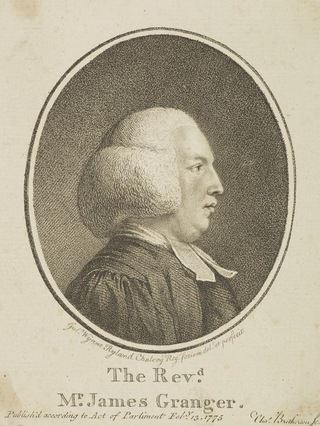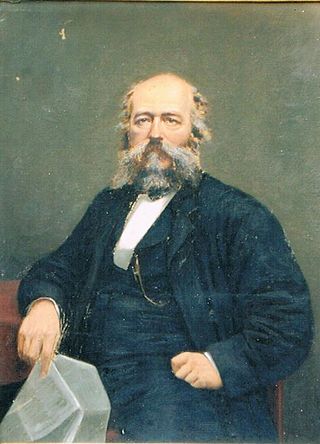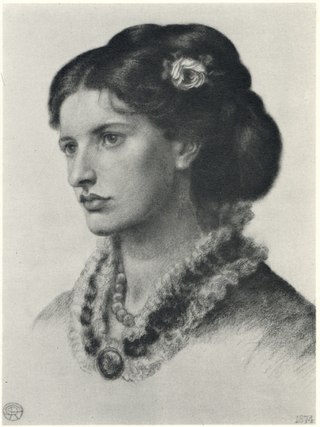
Thomas Gainsborough was an English portrait and landscape painter, draughtsman, and printmaker. Along with his rival Sir Joshua Reynolds, he is considered one of the most important British artists of the second half of the 18th century. He painted quickly, and the works of his maturity are characterised by a light palette and easy strokes. Despite being a prolific portrait painter, Gainsborough gained greater satisfaction from his landscapes. He is credited as the originator of the 18th-century British landscape school. Gainsborough was a founding member of the Royal Academy.

The National Gallery is an art museum in Trafalgar Square in the City of Westminster, in Central London, England. Founded in 1824, it houses a collection of more than 2,300 paintings dating from the mid-13th century to 1900. The current director of the National Gallery is Gabriele Finaldi.

George Stubbs was an English painter, best known for his paintings of horses. Self-trained, Stubbs learnt his skills independently from other great artists of the 18th century such as Reynolds and Gainsborough. Stubbs' output includes history paintings, but his greatest skill was in painting animals, perhaps influenced by his love and study of anatomy. His series of paintings on the theme of a lion attacking a horse are early and significant examples of the Romantic movement that emerged in the late 18th century. He enjoyed royal patronage. His painting Whistlejacket hangs in the National Gallery, London.

A portrait miniature is a miniature portrait painting, usually executed in gouache, watercolor, or enamel. Portrait miniatures developed out of the techniques of the miniatures in illuminated manuscripts, and were popular among 16th-century elites, mainly in England and France, and spread across the rest of Europe from the middle of the 18th century, remaining highly popular until the development of daguerreotypes and photography in the mid-19th century. They were usually intimate gifts given within the family, or by hopeful males in courtship, but some rulers, such as James I of England, gave large numbers as diplomatic or political gifts. They were especially likely to be painted when a family member was going to be absent for significant periods, whether a husband or son going to war or emigrating, or a daughter getting married.

James Granger (1723–1776) was an English clergyman, biographer, and print collector. He is now known as the author of the Biographical History of England from Egbert the Great to the Revolution (1769). Granger was an early advocate of animal rights.

National Galleries Scotland: Portrait is an art museum on Queen Street, Edinburgh. Portrait holds the national collections of portraits, all of which are of, but not necessarily by, Scots. It also holds the Scottish National Photography Collection.

No contemporary physical description of William Shakespeare is known to exist. The two portraits of him that are the most famous are the engraving that appears on the title-page of the First Folio, published in 1623, and the sculpture that adorns his memorial in Stratford upon Avon, which dates from before 1623. Experts and critics have argued that several other paintings from the period may represent him, and more than 60 portraits purporting to be of Shakespeare were offered for sale to the National Portrait Gallery within four decades of its foundation in 1856, but in none of them has Shakespeare's identity been proven.
Martin Postle is a British art historian who is deputy director for collections and publications at the Paul Mellon Centre for Studies in British Art, London, and a leading expert on the art of Sir Joshua Reynolds. He is a former curator at the Tate Gallery.

Richard Samuel was an English portrait painter who won several prestigious medals in the 1770s in London. He is known for a small number of paintings including what came to be known as The Nine Living Muses of Great Britain of 1778 in which he painted the nine leading blue stocking women of his time.

Thomas Hearne was an English landscape painter, engraver and illustrator. Hearne's watercolours were typified by applying a wash of subtle subdued colours over a clear outline in fine brush, pen or pencil. His techniques were studied by younger artists such as Thomas Girtin and J. M. W. Turner.

Thomas Landseer was a British artist best known for his engravings and etchings, particularly those of paintings by his youngest brother Edwin Landseer.

Charles Allen Duval, often spelled duVal or Du Val,, was a well-known Victorian portrait painter, photographer, literary critic, illustrator and writer. He played a large role within the city of Manchester's thriving art scene, including the Manchester Academy of Fine Arts, the Manchester City Art Gallery and the Art Treasures Exhibition, Manchester 1857: a scene which was underpinned by Manchester's industrial entrepreneurs and politicians who all flocked to his studio to have their portraits painted.
Ian Lorne Campbell is a Scottish art historian and curator. Campbell was Beaumont Senior Research Curator at the National Gallery, London from 1996 to 2012, and from 1974 to 1996 lectured on the Northern Renaissance at the Courtauld Institute of Art, University of London. He has curated major exhibitions at the National Gallery and other museums, including ones on Rogier van der Weyden at Leuven in 2009 and the Prado in 2015.

Lucy Madox Brown Rossetti was a British artist, author, and model associated with the Pre-Raphaelites. She was married to the writer and art critic William Michael Rossetti.
Peter Funnell is Curator of Nineteenth-Century Portraits and Head of Research Programmes at the National Portrait Gallery, London.

Richard Bull (1721–1805) was an English landowner and politician who sat in the House of Commons from 1756 to 1780. He was a noted art collector who lived in a historic house on the Isle of Wight.
Extra-illustration or grangerisation is the process whereby texts, normally in their published state, are customized by the incorporation of thematically linked prints, watercolors, and other visual materials.

Elizabeth Selina Eger is a reader in the Department of English at King's College London. She is a specialist in women's writing of the eighteenth century, the concept of luxury, and the lives of "Bluestocking" women. She initiated and co-curated the exhibition Brilliant Women: 18th-Century Bluestockings which was held at the National Portrait Gallery, London, in 2008.

Gillian Perry is professor of history of art at the Open University. She is a specialist in eighteenth century portraiture and has written two books on the actress in art. In 2011/12 she curated the exhibition The First Actresses at the National Portrait Gallery in London which was widely reviewed.
Brian Francis Allen is Chairman of the Hazlitt Group that includes the art dealership Hazlitt, Gooden and Fox and Arnold Wiggins and Sons, the leading dealers in historic picture frames.















